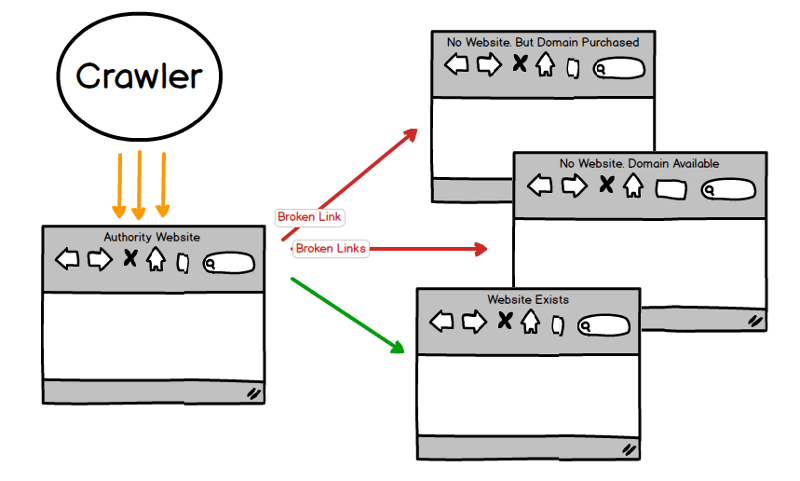All Categories
Featured
Table of Contents
- – What Are The Most Recommended Semantic Seo Fra...
- – Top-Rated Semantic Search And Seo
- – What Is The Most Recommended Semantic Keyword...
- – What Is The Ideal Semantic Markup In Seo Serv...
- – What Is The Most Reputable Semantic Search S...
- – Who Is The Leading Semantic Seo Content Stra...
- – What Is Semantic Seo
The web is transforming, coming to be much more and extra semantic. SEO is also altering and becoming more semantic. This is due to the fact that online search engine have advanced and are relocating a growing number of in the direction of reading web content on the internet. Of training course, that has actually also transformed the way we create material, particularly if we wish to rate much better in the search engines.
Intertwingularity is not typically acknowledged, people maintain acting they can make things deeply hierarchical, categorizable and sequential when they can't. Based on the partnerships between search objectives, the search engine likes a web content in positioning by computing the range between the vectors of definition.
It enables you to see, beginning with a subject, all the entities that relate to that topic. This way you can clearly see which entities/concepts/ideas have actually currently been covered on your internet site, and you can find brand-new chances by understanding what material you can add and how to develop it.
What Are The Most Recommended Semantic Seo Framework
It is able to make your web content understandable for search engines on the one hand and for your audience on the other. Structuring your web content design highlights your content and its hidden partnerships to make sure that online search engine can recognize you amongst thousands of items of information, making you extra noticeable to users that fulfill the search intent relevant to your business.
In semantic search engine optimization copywriting, an editor starts from a more comprehensive variety of topics and tailors the web content to include semantically relevant terms and expressions that assist readers recognize a topic, comparable to checking out content in a wiki. From a material writing perspective, one functional means to do this is to develop a vocabulary of terms and inquiries surrounding your target subject.
Top-Rated Semantic Search And Seo
Discover more regarding by seeing the by!.

Semantic search describes the procedure of how internet search engine recognize and match key words to a searcher's intent in natural search results. Prior to semantic search, online search engine like Google operated like matchmakersaligning details words in your question with those specific words on websites. The results were straightforward however usually lacked deepness.
What Is The Most Recommended Semantic Keywords Today
It makes it possible for Google to supply quick, precise solution to look questions about real-world topics. When you type an inquiry word into Google, you're not just entering a series of words. You take advantage of a complex internet of definitions and links. Google's Understanding Graph sees these words as entities with context and partnerships.
When you look for "Apple," Google doesn't simply see a word that describes a fruit. It recognizes Apple as a company and can provide associated info. Like the name of its chief executive officer, Tim Chef, or its most current supply rates. Google announced the Hummingbird update in 2013. It was Google's response to the rise of voice searches, where queries became more conversational and nuanced.
What Is The Ideal Semantic Markup In Seo Service To Use
By integrating NLP, Hummingbird allowed Google to relocate beyond simple keyword matching. It assisted the search engine comprehend search intent, increasing the probabilities that results would precisely match the factor behind an individual's search. As the 3rd crucial ranking factor after material and web links, RankBrain has actually boosted Google's semantic search abilities to comprehend the meaning of search inquiries.
Making it much more effective at handling never-before-seen search inquiries. RankBrain considers more than just key words when evaluating a search query.
So it fetches results that match the keywords and align with the general intent of providing pup training suggestions. And if the customer regularly browses for dog-related material, Google may focus on more comprehensive training guidesrecognizing the customer's continuous rate of interest in the topic. Incorporating technologies like the Knowledge Chart, Hummingbird, and RankBrain, semantic search aids the Google algorithm interpret and link data throughout a substantial web of information.
What Is The Most Reputable Semantic Search Strategies In The World
The focus changes from keyword option to an all natural strategy incorporating individual intent, topical relevance, and overall individual experience. Producing content that resolves the searcher's requirements with detailed details can enhance your SERP positions.
And kind of web content can best satisfy their needs. A wider approach to material aligns better with semantic search's shift far from specific keyword matching and toward user intent. Which clarifies the enhanced concentrate on topic collections, rather than individual key words. Web content that covers search inquiries much more extensively not just pleases users.
And five times greater than sites that take 10 secs to lots. While technological SEO guarantees optimal site performance and accessibility, focusing on individual experience (UX) takes it a step additionally. UX intends to produce a visually enticing, straightforward user interface with engaging, high quality content that encourages visitors to remain. Semantic search innovation allows search engines to aim for results that provide the most effective possible UX.
Who Is The Leading Semantic Seo Content Strategies Company

All display Google's ability to attend to a topic query comprehensively. By recognizing the context and intent behind individual inquiries, online search engine can deliver more relevant details and potentially increase customer engagement. Personalization in search engine result produces much better UX.Based on your past search background and choices as a user, semantic search helps search engines tailor the results to match your unique needs and interests.
So it brings outcomes that match the key phrases and straighten with the total intent of supplying puppy training suggestions. And if the individual regularly browses for dog-related content, Google might focus on much more thorough training guidesrecognizing the user's continuous passion in the subject. Incorporating innovations like the Knowledge Chart, Hummingbird, and RankBrain, semantic search assists the Google algorithm analyze and connect data throughout a vast internet of details.
What Is Semantic Seo
The emphasis changes from keyword selection to a holistic strategy including customer intent, topical importance, and general individual experience. Producing web content that resolves the searcher's needs with detailed info can boost your SERP rankings.

A wider approach to content aligns better with semantic search's shift away from specific keyword phrase matching and towards customer intent. Content that covers search questions more completely not only satisfies customers.
And 5 times greater than websites that take 10 secs to load. While technical SEO ensures optimal internet site performance and availability, concentrating on individual experience (UX) takes it an action additionally. UX aims to develop a visually enticing, user-friendly interface with appealing, high quality content that encourages site visitors to stay. Semantic search modern technology allows internet search engine to intend for results that offer the most effective feasible UX.
All display Google's ability to deal with a subject question comprehensively. By comprehending the context and intent behind customer queries, internet search engine can deliver much more relevant information and potentially raise customer involvement. Customization in search results page creates far better UX.Based on your previous search background and choices as an individual, semantic search aids online search engine tailor the results to fit your one-of-a-kind requirements and interests.
Table of Contents
- – What Are The Most Recommended Semantic Seo Fra...
- – Top-Rated Semantic Search And Seo
- – What Is The Most Recommended Semantic Keyword...
- – What Is The Ideal Semantic Markup In Seo Serv...
- – What Is The Most Reputable Semantic Search S...
- – Who Is The Leading Semantic Seo Content Stra...
- – What Is Semantic Seo
Latest Posts
What Are The Highest Rated Implementing Semantic Seo?
What Is The Most Reliable Semantic Tagging For Seo?
What Is The Most Affordable Semantic Seo Content Strategies Deal
More
Latest Posts
What Are The Highest Rated Implementing Semantic Seo?
What Is The Most Reliable Semantic Tagging For Seo?
What Is The Most Affordable Semantic Seo Content Strategies Deal